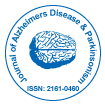Наша группа организует более 3000 глобальных конференций Ежегодные мероприятия в США, Европе и США. Азия при поддержке еще 1000 научных обществ и публикует более 700 Открытого доступа Журналы, в которых представлены более 50 000 выдающихся деятелей, авторитетных учёных, входящих в редколлегии.
Журналы открытого доступа набирают больше читателей и цитируемости
700 журналов и 15 000 000 читателей Каждый журнал получает более 25 000 читателей
Индексировано в
- Индекс Коперника
- Google Scholar
- Шерпа Ромео
- Открыть J-ворота
- Генамика ЖурналSeek
- Академические ключи
- ЖурналТОС
- Национальная инфраструктура знаний Китая (CNKI)
- Библиотека электронных журналов
- РефСик
- Университет Хамдарда
- ЭБСКО, Аризона
- OCLC- WorldCat
- Онлайн-каталог SWB
- Виртуальная биологическая библиотека (вифабио)
- Публикации
- Женевский фонд медицинского образования и исследований
- Евро Паб
- ICMJE
Полезные ссылки
Журналы открытого доступа
Поделиться этой страницей
Абстрактный
Possible Prevention of Alzheimer?s Disease by Aldehyde Dehydrogenase: A Perspective Review
Tetsumori Yamashima
Investigating the mechanism of neuronal death in Alzheimer’s disease is difficult, because only a tiny percentage of neurons are degenerating at any time point during the long prodromal period. Epidemiological, genetic, biochemical and animal model studies have attributed excessive aldehyde load as a cause of Alzheimer neuronal death. Focusing on toxic aldehydes will help fill gaps in our knowledge that cannot be explained by the amyloid β or tau hypotheses. Hydroxynonenal is formed by peroxidation of membrane lipids and LDL or during deep-frying of vegetable oils. It carbonylates Hsp70.1, a heat shock protein with the dual functions of a chaperone protein and lysosomal stabilizer. Hydroxynonenal-mediated Hsp70.1 carbonylation followed by calpain-mediated cleavage of carbonylated Hsp70.1, causes lysosomal neuronal death (the ‘calpain-cathepsin hypothesis’). Aldehyde dehydrogenase (ALDH) participates in the removal of not only ethanol-derived acetaldehyde, but also linoleic acid-derived hydroxynonenal. This review describes how scavenging hydroxynonenal by ALDH enzymes prevent Alzheimer’s disease.
Журналы по темам
- Биохимия
- Ветеринары
- Генетика и молекулярная биология
- Геология и науки о Земле
- Еда и питание
- Иммунология и микробиология
- Инженерное дело
- Клинические науки
- Материаловедение
- медицинские науки
- Науки об окружающей среде
- Общая наука
- Сельское хозяйство и аквакультура
- Социальные и политические науки
- Уход и здравоохранение
- Фармацевтические науки
- Физика
- Химия

 English
English  Spanish
Spanish  Chinese
Chinese  German
German  French
French  Japanese
Japanese  Portuguese
Portuguese  Hindi
Hindi